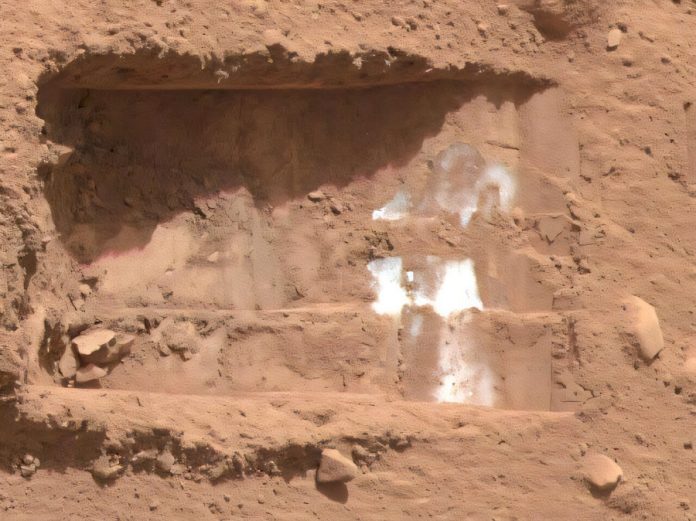
Could ancient microbes still be hiding on Mars—preserved for millions of years in ice? A new NASA and Penn State study suggests it’s possible.
Researchers have discovered that even fragments of life’s building blocks could survive astonishingly long in Martian ice, offering hope that future missions might find evidence of past or even existing life.
The team, led by NASA Goddard scientist Alexander Pavlov and Penn State geoscientist Chris House, recreated Mars-like conditions in the lab.
They wanted to know how long organic molecules—such as amino acids, the building blocks of proteins—could survive in frozen Martian soil and ice.
Their findings, published in Astrobiology, show that molecules from E. coli bacteria sealed in pure water ice could last for more than 50 million years despite constant bombardment by cosmic radiation.
That’s far longer than the age of most surface ice on Mars, which is estimated to be under two million years old.
“That means if there are bacteria near the surface of Mars, future missions can find it,” said House.
He explained that frozen areas might hold ancient organic material, trapped and protected from the harsh Martian environment.
To test this, the scientists froze samples of E. coli bacteria in different mixtures: some in pure ice, others mixed with simulated Martian soil made from silicate-based rocks and clay.
They then exposed the samples to radiation equal to what they would experience on Mars’ surface over 20 million years—at a chilling minus 60°F, similar to Martian polar temperatures.
The samples were later analyzed to see how much of the bacteria’s amino acids survived.
The results were surprising. In pure ice, more than 10% of the amino acids survived, even after a simulated 50 million years.
But when the bacteria were mixed with soil or rock, the amino acids broke down ten times faster and did not last. Pavlov said this goes against earlier predictions.
“We thought organic material in ice or water would be destroyed even more quickly,” he said. “It turns out pure ice protects it much better.”
The researchers think this happens because in pure ice, radiation damage becomes “frozen in place,” meaning harmful particles can’t easily reach and destroy organic compounds.
In contrast, when minerals are mixed in, a thin film forms between the ice and the soil that allows radiation to travel and break down the molecules.
The discovery suggests that the best places to search for signs of life on Mars are not in rocky soil but in regions rich in pure ice. Areas like the polar caps or ice-filled craters could preserve traces of ancient microbes waiting to be discovered.
The team also tested similar conditions for icy moons like Europa (around Jupiter) and Enceladus (around Saturn), where temperatures are even colder.
They found that extreme cold slows down molecular decay even further, raising hopes that missions like NASA’s Europa Clipper—currently en route and expected to reach Jupiter in 2030—might detect preserved organic material beneath the moon’s frozen surface.
For Mars, previous missions such as NASA’s 2008 Phoenix lander have already photographed subsurface ice.
Future explorers may need to dig deeper, using drills or scoops like Phoenix’s, to reach undisturbed layers where biological molecules could still be hiding—frozen in time, waiting for discovery.



